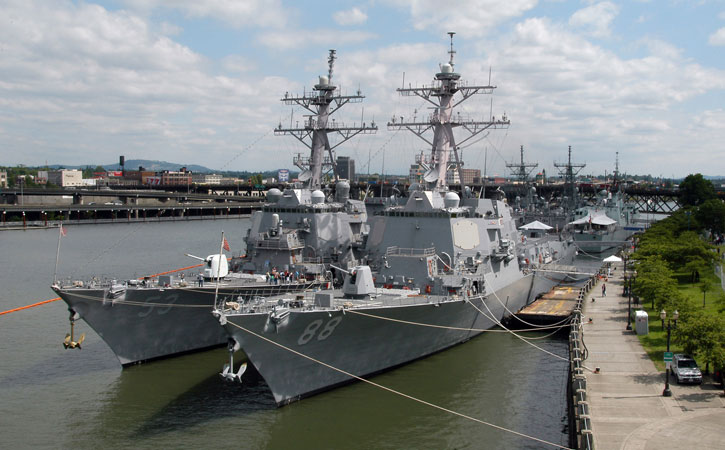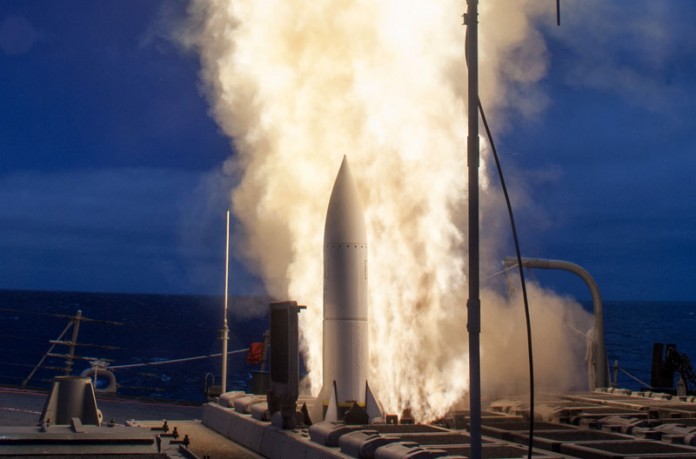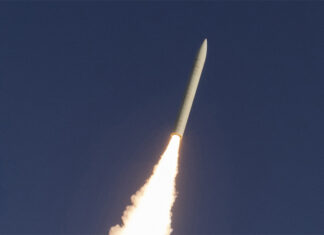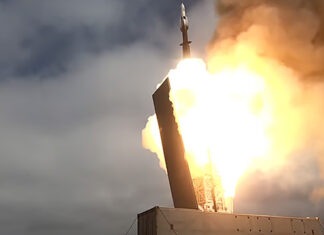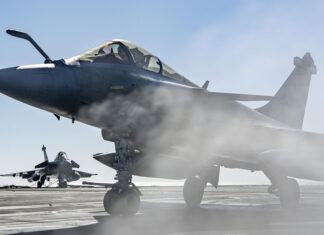
Over the course of three days June 18-20, the crew of Guided-missile destroyer USS John Paul Jones (DDG 53) successfully engaged six targets off the coast of Southern California, firing a total of five missiles that included four Standard Missile-6 (SM-6) missiles and one Standard Missile-2 (SM-2) missile. One of these exercises, designated as NIFC-CA AS-02A, resulted in the longest surface-to-air engagement in naval history.
During the underway period, John Paul Jones also conducted its first ballistic missile tracking exercise while simultaneously tracking two supersonic and two subsonic missile targets. This event fully demonstrated the capabilities of Aegis Baseline 9C and of John Paul Jones as the first Integrated Air and Missile Defense (IAMD) destroyer.
DDG 53 is now ready to assume the role as the Navy’s Integrated Air and Missile Defense test ship, following a change of homeport to Pearl Harbor later this summer
The live-fire tests was part of the Baseline 9C Aegis Combat System during Combat Systems Ship’s Qualification Trials (CSSQT) and Naval Integrated Fire Control Counter Air (NIFC-CA) capability, preparing the missile destroyer for its new role as missile defense test ship.
Since 2012 the vessel went through combat systems modernization the BAE ship repair facility in San Diego, as part of the destroyer modernization program. Over the course of a year, John Paul Jones received new computing infrastructure, SPY-1D transmitter upgrades, and a multi-mission signal processor which comprises the Aegis Baseline 9C suite.
According to Cmdr. Andrew Thomson, the ship’s commanding officer, USS John Paul Jones is now ready to assume the role as the Navy’s Integrated Air and Missile Defense test ship, following a change of homeport to Pearl Harbor in Hawaii later this summer. In the coming years, John Paul Jones is expected to test newer and more advanced systems that will be used to defend the nation and U.S. and allied forces overseas.
